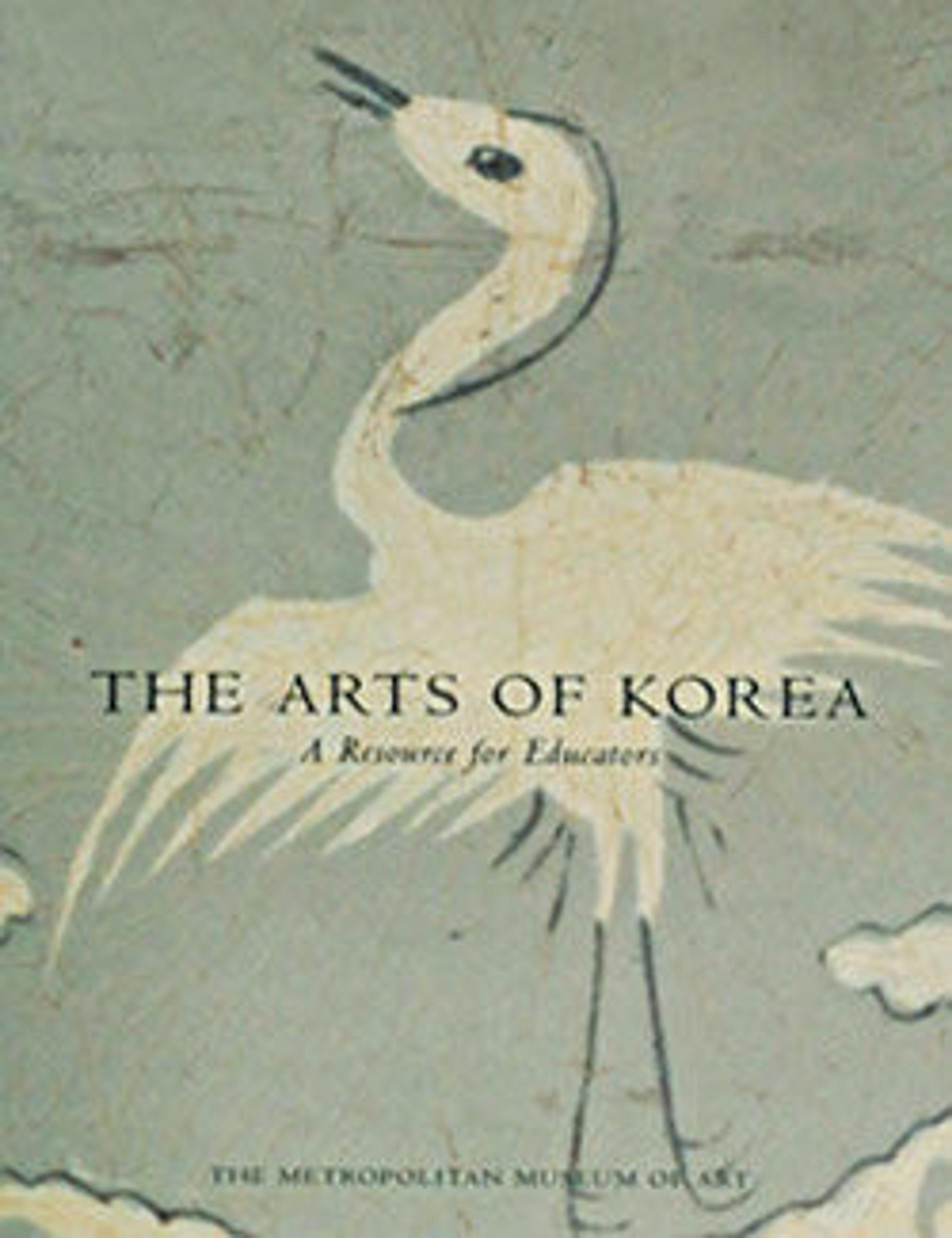Brahma with Attendants and Musicians
Originally a Hindu deity, Brahma (Korean: Beomcheon) was incorporated into the Buddhist pantheon and, along with the Hindu god Indra (Korean: Jeseok), became the protector of Buddhist teachings. The Brahma heaven was interpreted as a place of pleasure filled with entertainers and musicians. In this work, lithe figures playing instruments, such as a mouth organ, a long transverse flute, a two-stringed violin, a four-stringed lute with a crooked neck, wood clappers, and a triangular wind instrument made of clay, surround the towering Brahma at center. Ceremonial fans and bejeweled canopies held by assistants in the top row float above the festive scene.
Buddhist paintings on hemp were commissioned by non-royals, while members of the elite favored silk. Regardless of material, Buddhist paintings from the early Joseon period are rare because of the official suppression of Buddhism and promotion of neo-Confucian ideology.
When Mrs. Harkness gave this work to the Met in 1921, it was thought to be either Chinese or Korean. Mr. and Mrs. Edward S. Harkness also collected and donated European decorative art and Egyptian art.
Buddhist paintings on hemp were commissioned by non-royals, while members of the elite favored silk. Regardless of material, Buddhist paintings from the early Joseon period are rare because of the official suppression of Buddhism and promotion of neo-Confucian ideology.
When Mrs. Harkness gave this work to the Met in 1921, it was thought to be either Chinese or Korean. Mr. and Mrs. Edward S. Harkness also collected and donated European decorative art and Egyptian art.
Artwork Details
- 작자미상 범천왕을 중심으로 한 신중도 조선
- 作者未詳 神衆圖 朝鮮
- Title:Brahma with Attendants and Musicians
- Artist:Unidentified artist
- Period:Joseon dynasty (1392–1910)
- Date:late 16th century
- Culture:Korea
- Medium:Hanging scroll; ink and color on hemp
- Dimensions:Image: 85 × 87 in. (215.9 × 221 cm)
Overall with mounting: 132 × 97 in. (335.3 × 246.4 cm)
Overall with knobs: 132 × 101 3/4 in. (335.3 × 258.4 cm) - Classification:Paintings
- Credit Line:Gift of Mrs. Edward S. Harkness, 1921
- Object Number:21.57
- Curatorial Department: Asian Art
More Artwork
Research Resources
The Met provides unparalleled resources for research and welcomes an international community of students and scholars. The Met's Open Access API is where creators and researchers can connect to the The Met collection. Open Access data and public domain images are available for unrestricted commercial and noncommercial use without permission or fee.
To request images under copyright and other restrictions, please use this Image Request form.
Feedback
We continue to research and examine historical and cultural context for objects in The Met collection. If you have comments or questions about this object record, please contact us using the form below. The Museum looks forward to receiving your comments.
